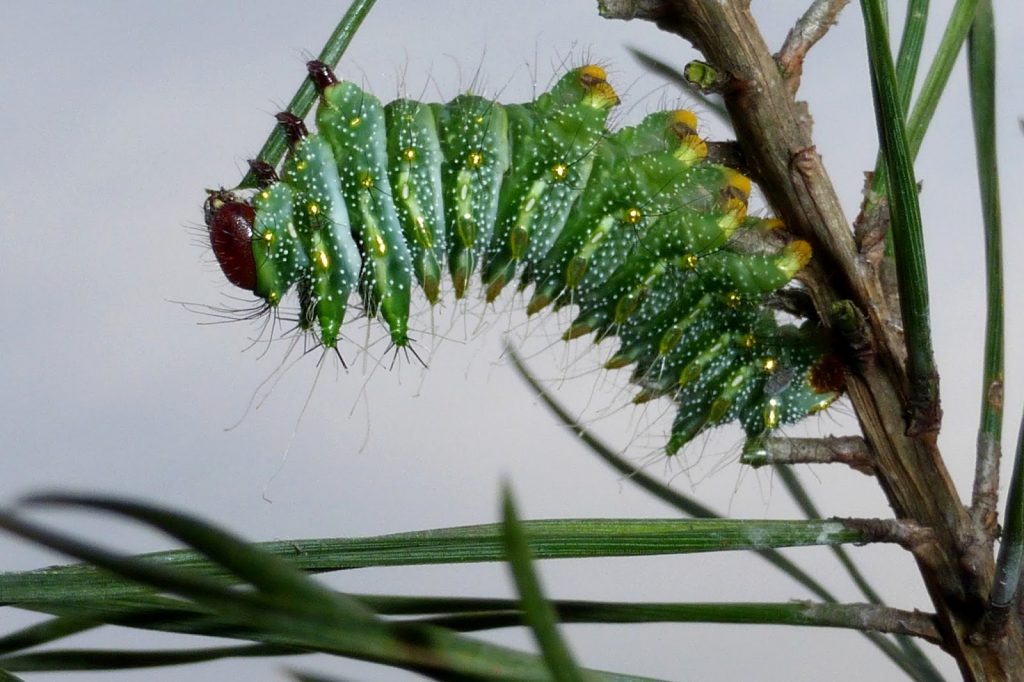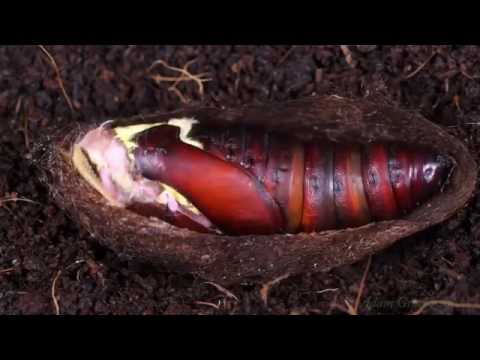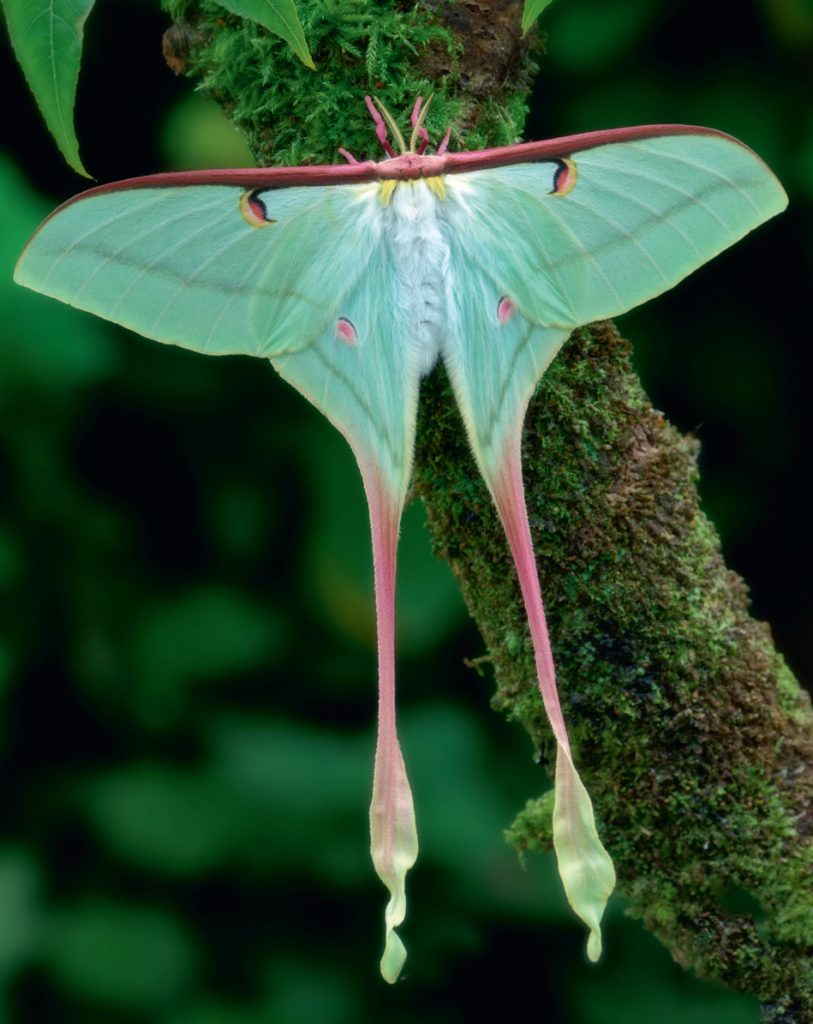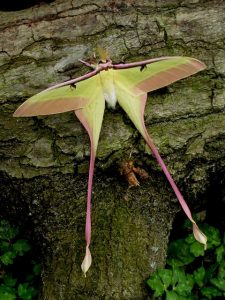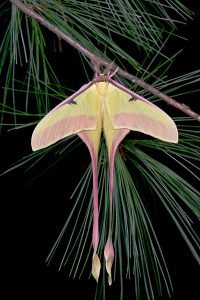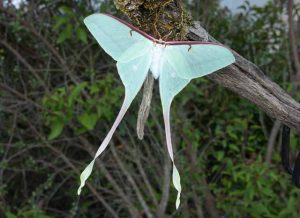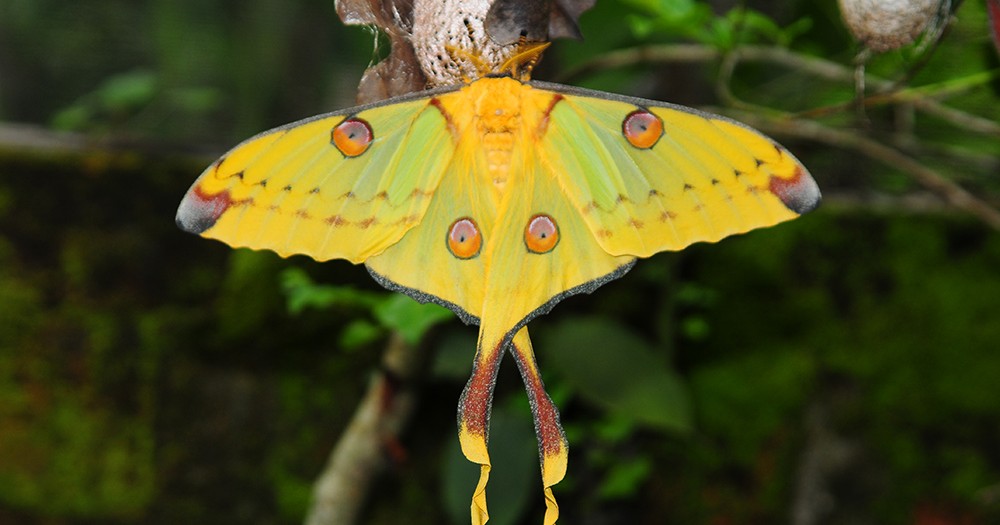Chinese Luna Moth (Actias dubernardi)
Chinese luna moth, or Chinese moon moth as it is popularly known, is a part of the Saturniidae family, mostly found in China.
i.redd.it
Scientific Classification
- Family: Saturniidae
- Genus: Estigmene
- Scientific Name: Actias dubernardi
Description and Identification
Caterpillar
When newly hatched, it has black hairs and goes through four molts throughout the larval phase. It is black in the first instar attaining a reddish-brown hue as it eventually grows. The larva turns orange-brown in the second instar. As it reaches the third instar, it becomes green with stripes of white and silver or gold markings on its tubercles’ edges. A fully grown larva is 6 – 7.5 cm long, with pine trees being its primary food source. The silken cocoon they weave among the pine needles or moss is mostly brown.
Adult Moth
Sexual Dimorphism: Present
The males appear leaner than the females with a longer and more elegant-looking tail.
Color and Appearance
Forewings: They have colorful wings, which, when opened in males, the wings appear yellow with bright pink on the edges. In females, on the other hand, it attains a pale green coloration. When closed, the coloration remains the same.
The flowing tails extending from their hindwings have a greenish-pink hue, longer than their wingspan.
Average Wingspan: 8 – 12 cm
Flight Pattern: Not recorded
Season: March-August
Eggs
The oval-shaped whitish-gray eggs are 0.15 cm long and 0.10 cm wide. They mostly remain confined to the branches in the wild or cage in captivity where females are reared.
Quick Facts
| Other Names | Chinese moon moth |
| Distribution | China |
| Habitat | Deciduous woodlands, forests, and places where pine trees grow |
| Predators | Bats, and birds |
| Lifespan of Adults | 10 – 12 days |
| Host Plants | Several pine species like Scotch pine and black pine |
| Adult Diet | Pine leaves |
Did You Know
- French entomologist described this species for the first time in 1897.
- This species is easy to keep in captivity and has also been crossed with the Spanish moon moth by a French entomologist group, the outcome being a beautiful moth.
- Their tails have auditive reflectors that can disturb the bat’s echolocation.
Scientific Classification
- Family: Saturniidae
- Genus: Estigmene
- Scientific Name: Actias dubernardi


